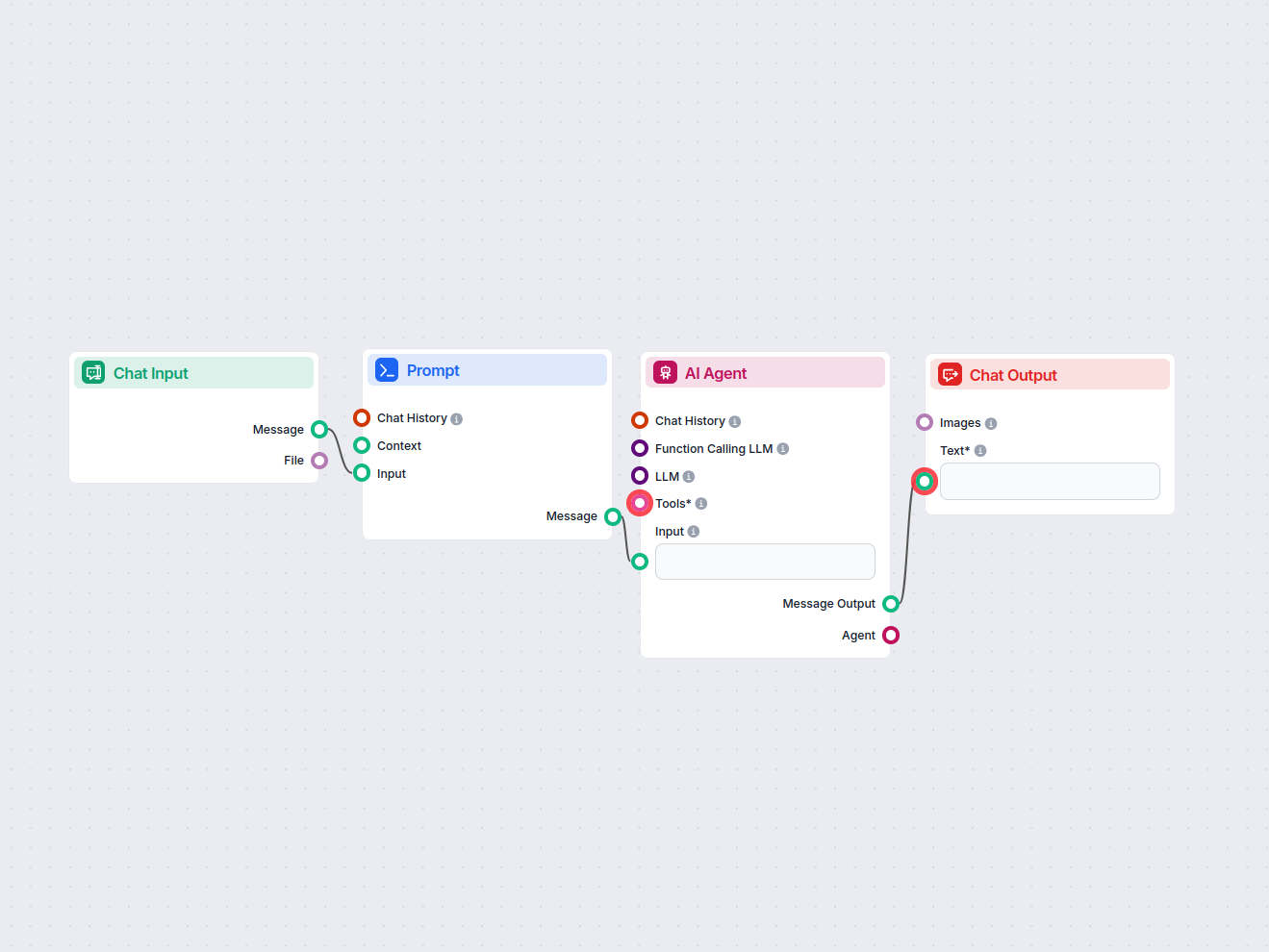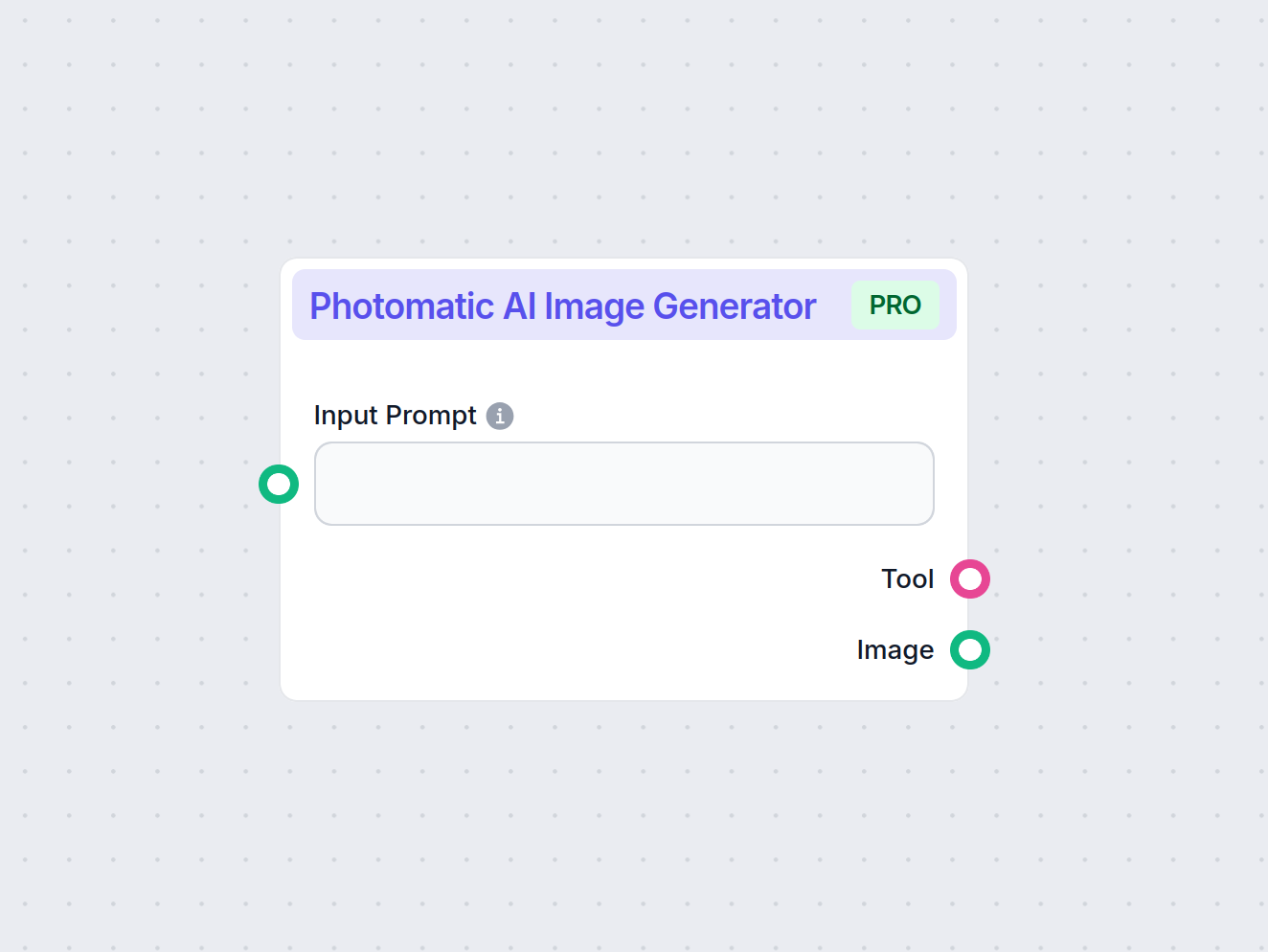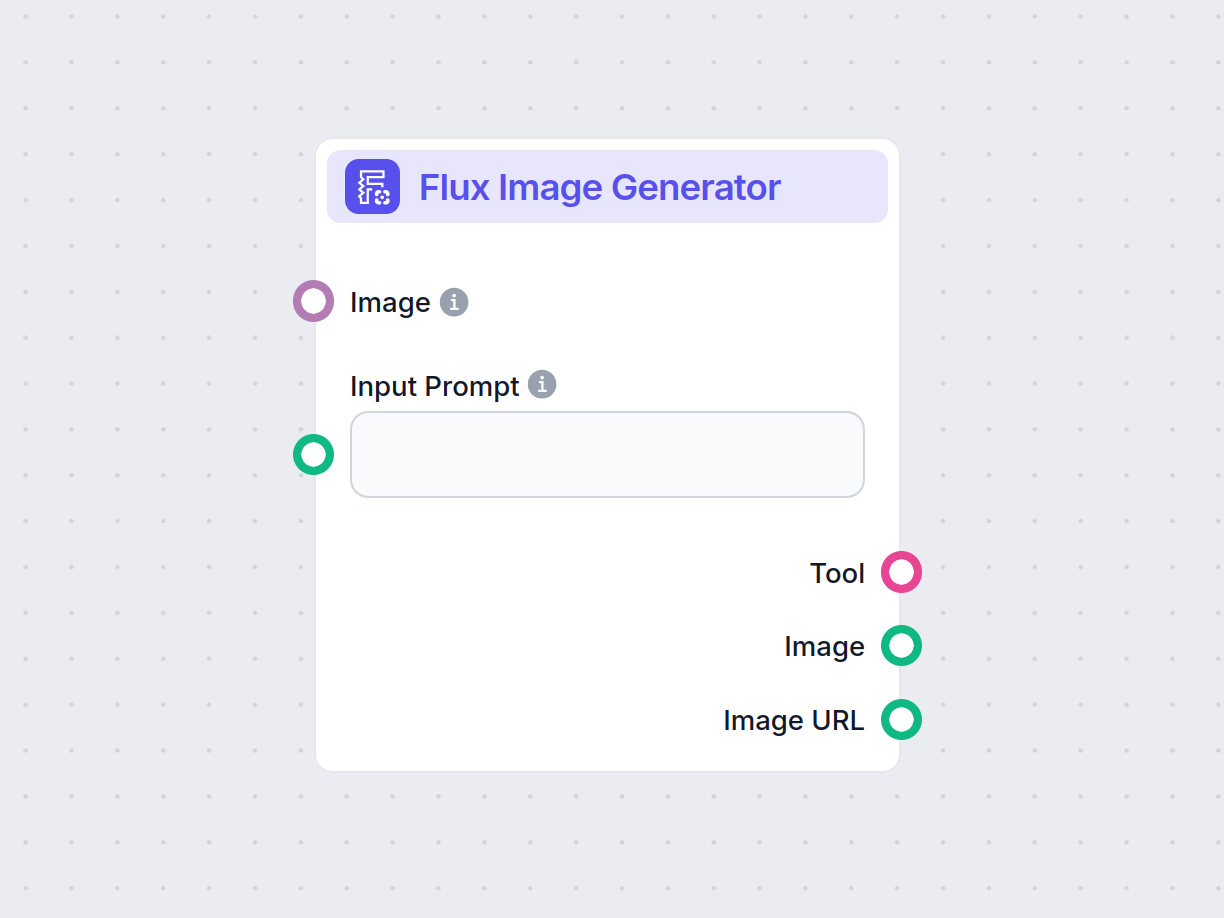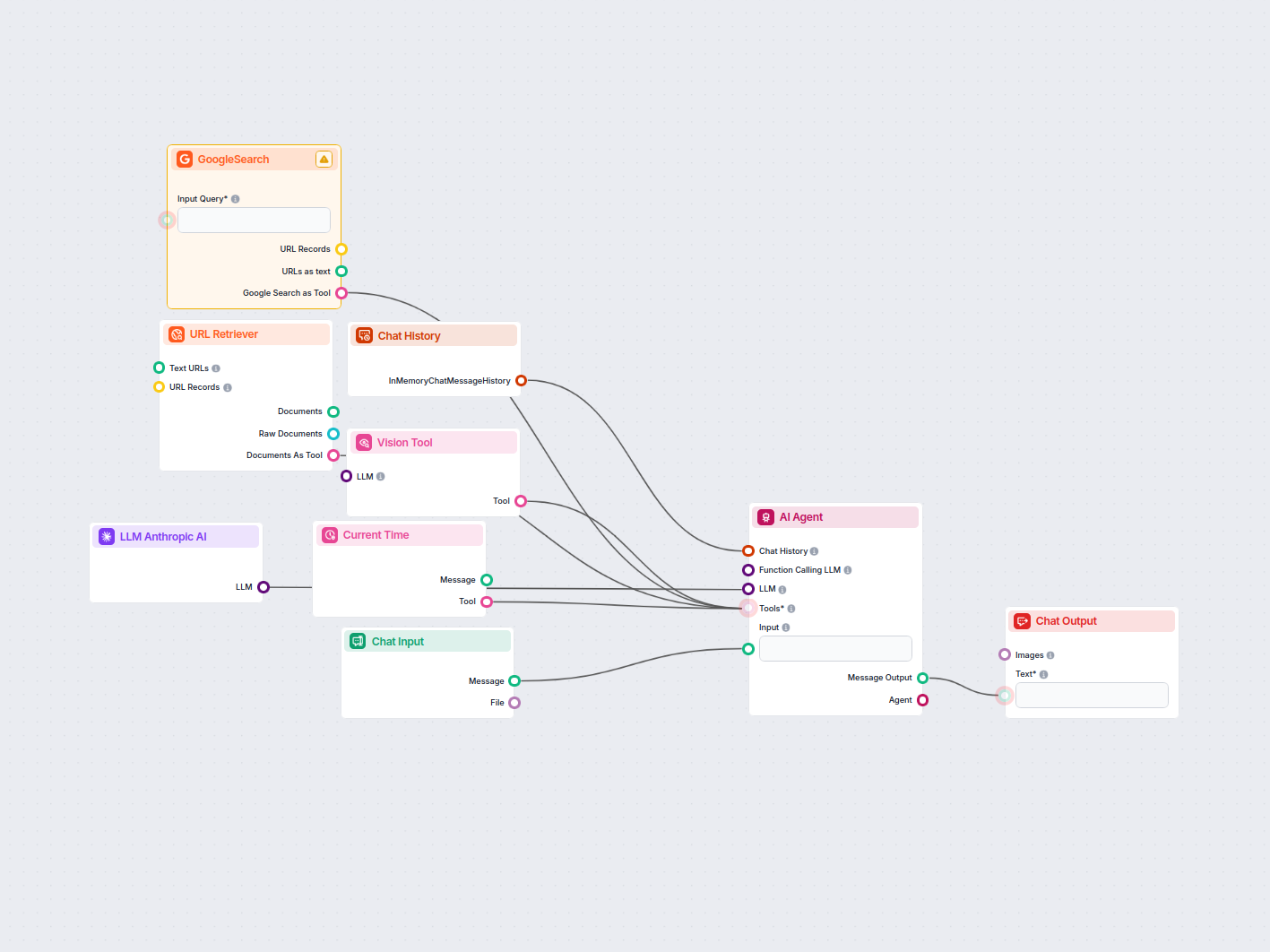
LinkedIn Ad Wettbewerbsanalyse-Tool
Dieser Workflow automatisiert die LinkedIn-Anzeigen-Marktforschung, indem er Top-Wettbewerber für ein Keyword identifiziert, deren Anzeigentexte und -visuals an...
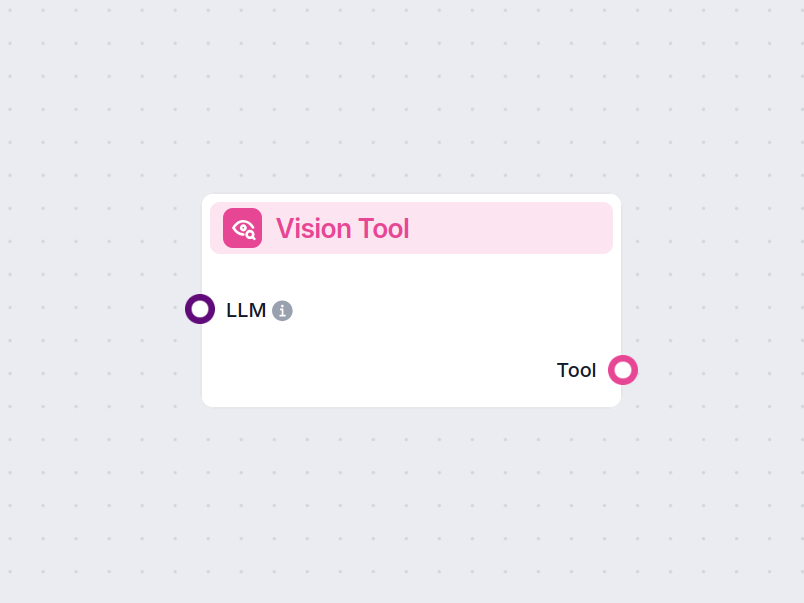
Die Vision Tool-Komponente ermöglicht es der KI, Bilder zu analysieren, wertvolle Erkenntnisse zu extrahieren und Fragen auf Basis visueller Inhalte innerhalb Ihrer Workflows zu beantworten.
Komponentenbeschreibung
The Vision Tool is a component designed to enable AI workflows to process and analyze images provided as attachments. It empowers AI agents to “see” images, extract meaningful information, and answer questions about the visual content. This makes it especially valuable for scenarios where understanding or interpreting images is essential, such as document processing, visual QA, content moderation, or multimedia analysis.
| Input Name | Type | Description | Required | Advanced |
|---|---|---|---|---|
| LLM (model) | BaseChatModel | The language model used for generating text responses based on image analysis. | No | No |
| Tool Description | String (multi) | Description that helps the agent understand how to use this tool. | No | Yes |
| Tool Name | String | The reference name for this tool within agent workflows. | No | Yes |
| Verbose | Boolean | Option to enable detailed (verbose) output for debugging or transparency. | No | Yes |
| Output Name | Type | Description |
|---|---|---|
| Tool | Tool | The configured Vision Tool instance ready for integration |
The Vision Tool outputs a Tool instance that can be used by AI agents to process images and produce relevant responses.
Incorporating the Vision Tool into your AI processes unlocks the ability to work with visual data, not just text. It bridges the gap between language and image understanding, creating opportunities for richer, more interactive, and intelligent applications.
Summary of Benefits:
By using the Vision Tool, your AI workflows can become more capable and versatile, paving the way for next-generation applications that leverage both text and vision intelligence.
Um Ihnen den schnellen Einstieg zu erleichtern, haben wir mehrere Beispiel-Flow-Vorlagen vorbereitet, die zeigen, wie die Vision Tool-Komponente effektiv genutzt wird. Diese Vorlagen präsentieren verschiedene Anwendungsfälle und Best Practices und erleichtern Ihnen das Verständnis und die Implementierung der Komponente in Ihren eigenen Projekten.
Dieser Workflow automatisiert die LinkedIn-Anzeigen-Marktforschung, indem er Top-Wettbewerber für ein Keyword identifiziert, deren Anzeigentexte und -visuals an...
Das Vision Tool ermöglicht Ihrem Flow, Bilder zu verarbeiten, bedeutungsvolle Informationen zu extrahieren und Fragen zum Bildinhalt mit KI zu beantworten.
Ja, das Vision Tool ist darauf ausgelegt, Bilder im Kontext Ihres Workflows zu interpretieren, sodass KI-Agenten visuelle und textuelle Informationen für intelligentere Automatisierung kombinieren können.
Typische Anwendungsfälle sind Dokumentenverarbeitung, automatisierte visuelle Inspektion, Datenauslese aus Bildern und die Verbesserung von Chatbot-Gesprächen durch Bildverständnis.
Absolut. Das Vision Tool ist eine Plug-and-Play-Komponente in FlowHunt, die sich leicht mit anderen Workflow-Elementen verbinden lässt, die Bildanalyse erfordern.
Verbessern Sie Ihre Workflows mit KI-gestütztem Bildverständnis – testen Sie das Vision Tool noch heute in FlowHunt.
Dieser Workflow nimmt vom Benutzer eingereichte Bildgenerierungs-Prompts entgegen und verfeinert sie mithilfe von KI-Best Practices. So wird sichergestellt, das...
Entdecken Sie die Photomatic KI-Bilderzeuger-Komponente – verwandeln Sie Text-Eingaben in hochwertige, KI-generierte Bilder mit fortschrittlichen Modellen, anpa...
Erzeugen Sie beeindruckende Bilder aus Texteingaben mit der Flux Bildgenerator-Komponente in FlowHunt. Passen Sie das Ergebnis mit Modellauswahl, Bildformat und...
Cookie-Zustimmung
Wir verwenden Cookies, um Ihr Surferlebnis zu verbessern und unseren Datenverkehr zu analysieren. See our privacy policy.
